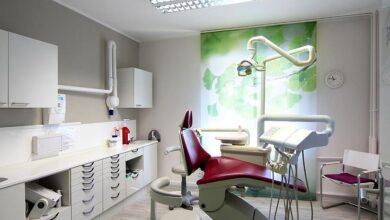How to Create an Efficient Kitchen Layout with Proper Equipment
create an effective kitchen layout that integrates essential kitchen equipment

Designing an efficient kitchen layout is crucial for any restaurant, catering business, or home chef. A well-planned kitchen not only improves workflow but also enhances safety and reduces stress during meal preparation. At the heart of this efficiency lies the selection of the right kitchen equipment. In this article, we will explore how to create an effective kitchen layout that integrates essential kitchen equipment, leading to a streamlined cooking process.
Understanding Kitchen Zones
Before diving into equipment selection, it’s important to understand the concept of kitchen zones. An efficient kitchen layout typically consists of the following zones:
- Preparation Zone: This area is where ingredients are washed, chopped, and prepped. It should be near the cooking zone to minimize movement during peak hours.
- Cooking Zone: This is the heart of your kitchen, where the cooking equipment is located. It should be easily accessible from both the preparation and plating zones.
- Plating/Serving Zone: This area is where dishes are plated and prepared for service. It should be close to both the cooking zone and the service area.
- Cleaning Zone: This area includes sinks and dishwashers and should be strategically placed to facilitate quick cleanup after service.
By defining these zones, you can better determine the kitchen equipment that will serve each area effectively.
Selecting the Right Kitchen Equipment
Now that you have established the zones, it’s time to focus on selecting kitchen equipment that fits each area. Here are key pieces of equipment to consider:
1. Preparation Equipment
- Cutting Tables: Ensure you have ample space for food prep. Stainless steel tables are ideal for durability and easy cleaning.
- Food Processors: These can save time by speeding up tasks like chopping and mixing.
- Scales and Measuring Tools: Accurate measurements are essential for consistency in recipes.
2. Cooking Equipment
- Ranges and Ovens: Choose the right combination of ranges, ovens, and grills that suit your menu. Commercial-grade equipment offers better performance and durability.
- Fryers: If your menu includes fried foods, a high-quality fryer is a must-have.
- Steamers: For healthier cooking options, consider incorporating steamers into your cooking zone.
3. Plating/Serving Equipment
- Heat Lamps or Hot Holding Units: These ensure that food stays at the right temperature before serving.
- Service Counters: Design your plating area with enough space to organize dishes efficiently and avoid congestion during service.
4. Cleaning Equipment
- Dishwashers: Invest in a commercial dishwasher that can handle high volumes of dishes quickly and efficiently.
- Three-Compartment Sinks: This is essential for washing, rinsing, and sanitizing cookware and utensils.
Optimizing Your Kitchen Layout
Once you have selected the necessary kitchen equipment, it’s time to optimize your layout:
1. Create a Workflow
Arrange your kitchen equipment in a way that supports a natural workflow from preparation to cooking to serving. The classic “work triangle” concept suggests that the three main areas (preparation, cooking, and serving) should form a triangle for optimal movement.
2. Allow for Movement
Ensure there is enough space between equipment for staff to move safely and efficiently. Aisles should be wide enough to accommodate multiple chefs working simultaneously, especially during peak service times.
3. Consider Safety
Safety should always be a priority in your kitchen layout. Keep heavy equipment on lower shelves and ensure that all kitchen equipment is easily accessible. Install non-slip flooring to prevent accidents, and make sure that fire safety equipment is readily available and properly placed.
4. Use Vertical Space
Maximize your kitchen’s efficiency by utilizing vertical space for storage. Shelving units and wall-mounted racks can help keep your kitchen organized and free of clutter, allowing for quick access to ingredients and equipment.
Regular Maintenance and Upgrades
Creating an efficient kitchen layout is not a one-time task; it requires regular assessment and maintenance. Ensure that all kitchen equipment is properly maintained to avoid breakdowns during busy hours. As your menu evolves, be open to upgrading or adding new kitchen equipment that fits your operational needs.
Conclusion
An efficient kitchen layout is a combination of thoughtful planning and the right kitchen equipment. By understanding kitchen zones, selecting appropriate equipment, and optimizing your layout, you can create a space that enhances productivity and improves the overall cooking experience. Investing time and resources into designing an effective kitchen layout will pay off in increased efficiency, safety, and ultimately, customer satisfaction. Whether you are running a bustling restaurant or preparing meals at home, the right kitchen equipment can make all the difference in your culinary success.





